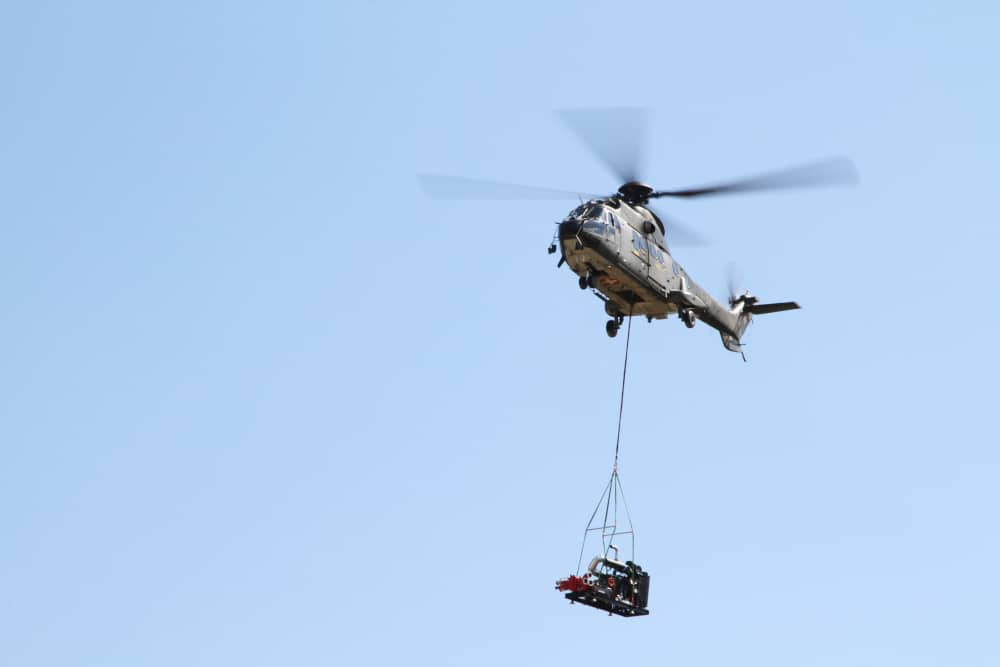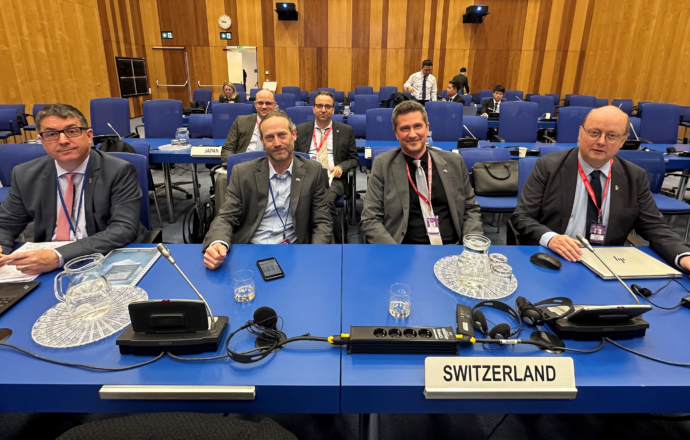After the events in Fukushima Daiichi, ENSI ordered immediate actions and additional safety tests for the Swiss nuclear power plants. Moreover, from the accident analysis and the EU stress test, ENSI derived a need for action to improve nuclear safety in Switzerland: the “Fukushima Action Plan”.



Immediately following the accident in the Fukushima Daiichi nuclear power plant (NPP), ENSI instigated two immediate actions in Switzerland: An emergency equipment store was created in Reitnau and became operational on 1 June 2011. Parallel to this, the Swiss nuclear power plants backfitted additional water supply connections to the spent fuel ponds.
Fukushima Action Plan: Various backfits to improve safety
In addition to the immediate actions, ENSI undertook a comprehensive accident analysis and also actively participated in the EU Stress Test during 2011 (see also “Ten Years on from Fukushima (3/6): the EU Stress Test”). This resulted in a total of 43 checkpoints, which, as part of the Swiss Fukushima Action Plan, were consolidated into 20 investigation key points. ENSI completed work on the action plan at the end of 2016. ENSI also followed up some of the points still open as part of its normal regulatory activities.
From 2012 to 2015 ENSI defined annual focal points in the Fukushima Action Plan and also published related reports, indicating the current state of progress. In the Fukushima Action Plan Final Report (in German), ENSI summarised the investigations that had been carried out and the resulting actions.
Protection against natural events
The investigations performed by ENSI as part of the Fukushima Action Plan, confirmed the following: The Swiss nuclear power plants have a high level of protection against the effects of earthquakes, flooding and extreme weather conditions. Previously assumed hazards were updated for this purpose. If main safety functions were to fail, nuclear power plants have also taken precautions to protect people and the environment.
To improve their safety, ENSI required backfits at Mühleberg and Beznau NPPs: an emergency cooling water supply independent of the River Aare in Mühleberg NPP as well as new earthquake-resistant systems for spent fuel pool cooling at both plants. Both backfits have been completed at Mühleberg NPP. At Beznau NPP, the backfit has been delayed by a necessary fundamental concept change and is only likely to be completed for both units during the next couple of years.
Severe accident management
In the investigations into how far Swiss nuclear power plants are protected against severe accidents, ENSI identified a number of improvement possibilities. A series of actions were sequentially implemented: Alongside the external emergency equipment store in Reitnau, an emergency site was created for ENSI’s emergency organisation, the process flows and criteria for signalling and issuing alerts for radioactive releases into watercourses were adapted, plant-external emergency deployment centres were set up, and (extra) passive recombiners for controlling hydrogen levels inside and outside the containment were backfitted in the reactor building of the Gösgen, Leibstadt and Beznau NPPs.
National emergency management
The Fukushima analysis also uncovered deficits in emergency provisions: In Japan, provisions for countering beyond design-basis accidents were insufficient – there was a lack of necessary equipment and also of legally-founded, clearly-defined emergency preparation. Therefore the Federal Council convened the interdepartmental working group to review the emergency preparedness measures for extreme events in Switzerland (IDA NOMEX). ENSI was also part of the working group. The purpose of the working group was to determine whether and how emergency protection in Switzerland can be improved.
The 56 actions identified in the report were implemented by the responsible federal offices. ENSI played a decisive role in elaborating requirements for the measuring and forecasting system with which ENSI would measure and assess the radiological situation after a severe accident and also participated in reviewing the reference scenarios for emergency planning and the zone concept. With the replacement of the MADUK probes, extra requirements in respect of telecommunications, infrastructure and emergency power supply have been implemented. Likewise, with the introduction of satellite telephony within ENSI and a new IAEA-compatible emergency classification system, improvements have been achieved both in the communications infrastructure and the early warning of the authorities in the event of an accident.
National regulation
The fact that the accident at the Fukushima Daiichi NPP was able to develop with such severe consequences was also caused by a lack of safety awareness by the licensee and authorities. ENSI drew the following conclusions: Questions about safety culture have increasingly become the focus of regulatory activities, and, since the time of the accident, human and organisational factors have also increasingly become a regulatory focus. ENSI has also investigated its own oversight culture and introduced improvement actions.
This is the fourth part of an ENSI series marking the tenth anniversary of the Fukushima disaster of 11 March 2011. The next part about the points of view that Switzerland and ENSI represented in respect of the strengthening of nuclear safety, will be published on 4 March 2021.









